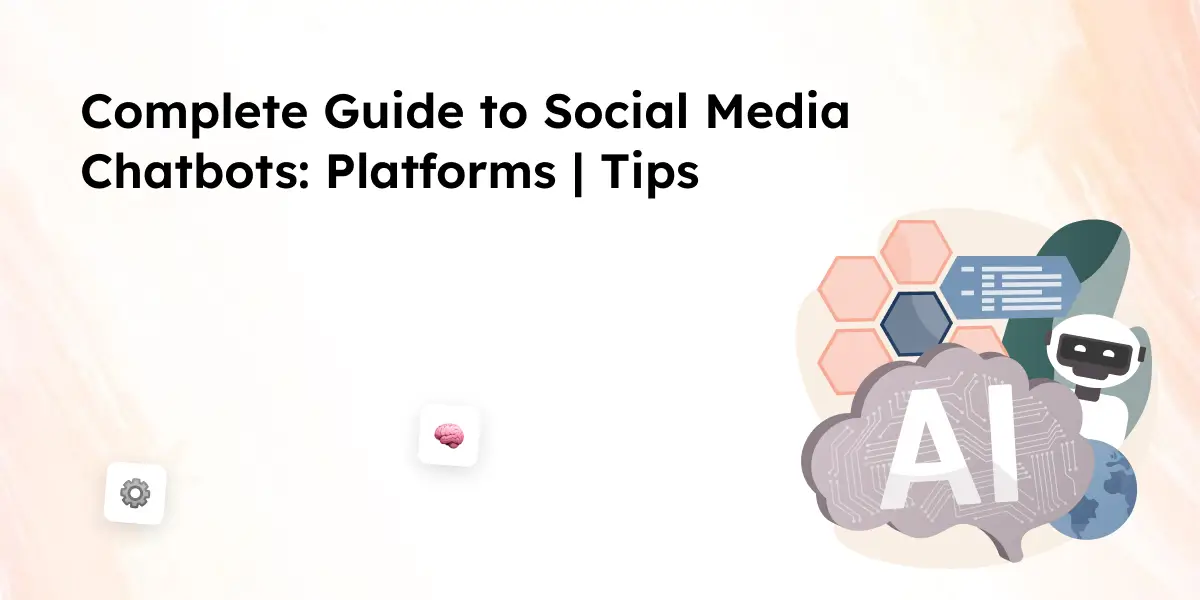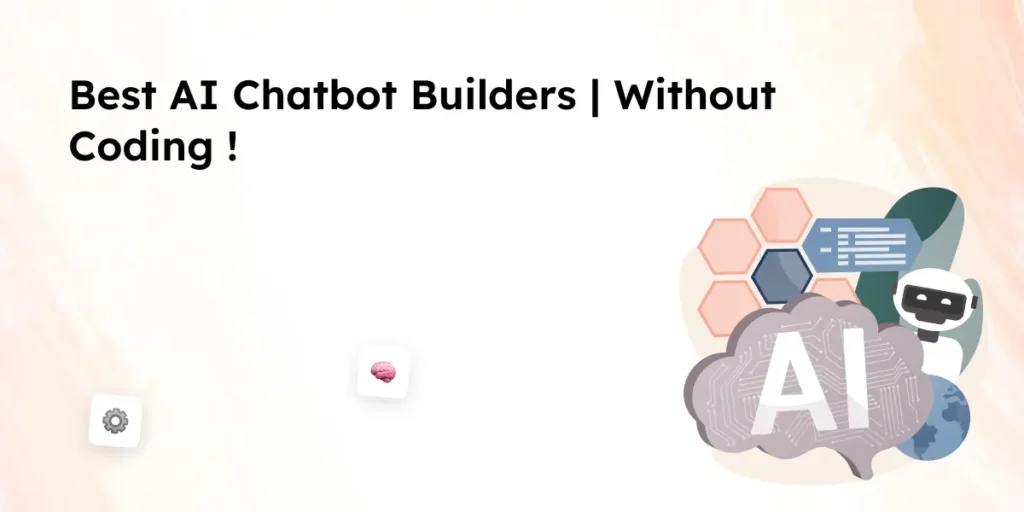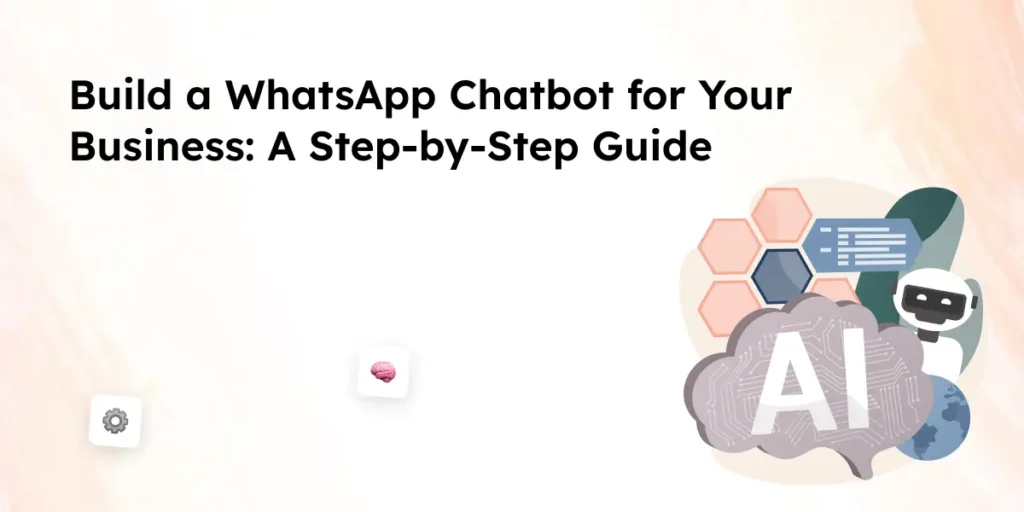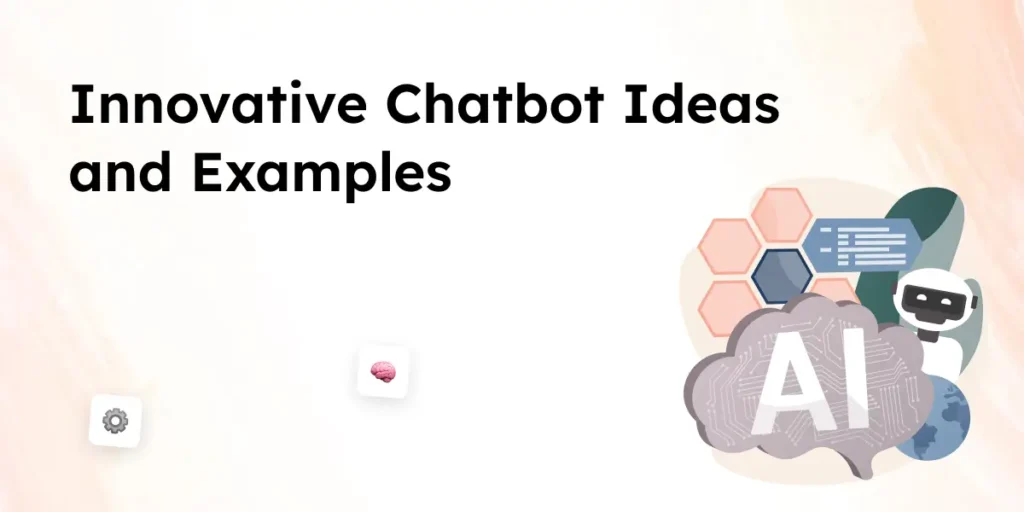Social media chatbots are automated programs designed to interact with users on platforms like Facebook Messenger, WhatsApp, and Instagram. Businesses use chatbots to automate customer support, answer frequently asked questions, and personalize user interactions.
The demand for AI chatbots has grown because they can handle high volumes of messages without human intervention. Companies are integrating bots across social channels to improve customer experience and engagement.
This guide covers everything about chatbots for social media, from choosing the right bot builder to best practices for implementation. You’ll learn about rule-based chatbots, AI-powered bots, and how social media bots are automated to enhance brand presence.
Are you looking to improve your social media marketing strategy? Keep reading for a complete guide on chatbot platforms, how to create a chatbot, and the benefits of social media automation.
What Are Social Media Chatbots?
Social media chatbots are automated programs that interact with users on social platforms. They help businesses streamline customer support, automate responses, and improve engagement. These bots are available on the market in different types, including rule-based and AI-powered options.
Bots used on social media platforms can answer customer queries, guide users through purchase decisions, and even offer product recommendations. Businesses often integrate a chatbot solution with platforms like Facebook Messenger, WhatsApp bot, and Instagram to provide instant responses.
How Do Chatbots Work on Social Media?
A chatbot works by processing user inputs and responding with relevant information. Some bots operate based on predefined rules, while others use AI and machine learning to improve over time. Businesses use AI chatbots for social media to provide more natural and personalized interactions.
There are two main types of social media bots:
- Rule-Based Chatbots – These bots follow a script and respond based on preset options. They are ideal for handling frequently asked questions and guiding users through structured conversations.
- AI Chatbots – These bots use AI and machine learning to understand user intent and provide dynamic responses. AI chatbot solutions can personalize interactions and improve engagement.
Why Are Social Media Bots Important?
Social media bots are automated to reduce response time, improve customer satisfaction, and enhance brand reputation. Chatbots can collect user data, analyze conversations, and optimize social media marketing efforts.
Marketing teams use chatbots across different social media channels to enhance customer interactions. From website chat windows to live chat on social platforms, these bots ensure seamless communication.
With the rise of generative AI, chatbots are becoming increasingly intelligent, providing more human-like interactions. Businesses can activate a bot to improve their social media presence and create engaging chatbot conversations.
Best Social Media Chatbot Platforms
Choosing the right chatbot platform is crucial for businesses looking to automate customer support and enhance engagement on social media channels. Many platforms like Facebook Messenger, WhatsApp, and Instagram support chatbots, allowing businesses to interact with customers in real time. Below are some of the best social media chatbots available on the market.
1. Converzation AI
Converzation AI is a powerful bot builder designed for platforms like Facebook Messenger, Instagram, and WhatsApp. It helps businesses create a chatbot for social media with an intuitive drag-and-drop interface. Converzation AI is widely used for chatbot marketing strategies, lead generation, and automated customer support.
2. Eva AI by Desku
Eva AI by Desku is one of the best AI chatbot platforms, ideal for businesses looking to personalize customer interactions. It supports rule-based chatbot creation and AI-powered responses. Companies use Eva AI for social media and website chat to improve engagement.
3. Tidio
Tidio is a chatbot solution that integrates with social media and website chat windows. It allows businesses to automate responses and guide users through common inquiries. Tidio is an excellent choice for companies that want to improve social media messaging and customer interactions.
4. MobileMonkey
MobileMonkey is a chatbot platform that works across multiple social messaging apps. It provides a step-by-step guide to creating a social media chatbot and includes tools for chatbot marketing automation.
5. Botsify
Botsify is a hybrid chatbot platform that supports both rule-based and AI chatbot functionalities. Businesses use Botsify for social media management, customer support automation, and integrating chatbot conversations across different channels.
How to Choose the Right Chatbot Platform
When selecting a chatbot platform, consider the following factors:
- Integration with social platforms: Platforms like Facebook Messenger, WhatsApp, and Instagram should be supported.
- AI capabilities: If you need a chatbot that learns from interactions, choose a platform with machine learning features.
- Ease of use: A simple bot builder makes it easier to create and customize chatbots.
- Personalization features: AI chatbot solutions should allow businesses to personalize responses based on user behavior.
- Scalability: The platform should support growing customer interactions without slowing down.
Using social media chatbots effectively can help businesses improve response times, increase engagement, and enhance the overall social media experience. Companies that integrate AI chatbots with their social media accounts can automate conversations and provide better support.
How to Create a Social Media Chatbot: A Step-by-Step Guide

Setting up a chatbot for social media can improve customer support, automate repetitive tasks, and personalize user interactions. Whether you want to create a chatbot for Facebook Messenger, WhatsApp, or Instagram, following a structured approach ensures the bot works effectively.
Step 1: Define Your Chatbot’s Purpose
Before building a chatbot, identify what you want it to achieve. Some common chatbot use cases include:
- Answering frequently asked questions
- Providing product recommendations
- Assisting with order tracking
- Automating responses for customer inquiries
Chatbots can help businesses by reducing response time and improving engagement on social platforms. Make sure the chatbot aligns with your overall social media marketing strategy. For enterprises, integrating social media chatbots can enhance brand engagement. Discover more about how Enterprise Chatbots streamline operations.
Step 2: Choose a Chatbot Platform
Select a chatbot platform that supports the social media channels you use. Some of the best social media chatbot platforms include ManyChat, Chatfuel, and MobileMonkey. Businesses should also consider AI chatbot options if they need more advanced interactions.
Step 3: Design Your Chatbot Conversations
Creating a social media chatbot involves designing interactions that guide users effectively. You can build chatbot conversations using:
- Rule-based chatbot responses for predefined replies
- AI chatbot capabilities for natural language processing
- Hybrid chatbots that combine both methods
Give your chatbot a clear structure so it can provide meaningful responses. AI chatbots can also learn from interactions and improve over time.
Step 4: Personalize the Chatbot’s Responses
Social media chatbots should offer a personalized experience. Use AI-powered features to tailor responses based on user queries. Personalization makes interactions more engaging and relevant, leading to better customer satisfaction.
Step 5: Test and Activate Your Bot
Once the chatbot is set up, run multiple tests to ensure it understands user queries correctly. Social media bots are automated programs, but they need adjustments to improve accuracy. Activate your bot only when it performs well across different scenarios.
Step 6: Monitor and Optimize Performance
After launching the chatbot, track its performance using analytics tools. Social listening can help improve responses by identifying common customer concerns. AI chatbots can collect data and adjust their responses to better serve users.
Step 7: Promote Your Chatbot on Social Media
To maximize engagement, let customers know they can interact with your chatbot. Use social media and website announcements to introduce the bot. Platforms like Facebook Messenger and WhatsApp provide built-in options to promote chatbot interactions.
Best Practices for Using Social Media Chatbots
Using chatbots on social media requires a strategic approach to maximize engagement and customer satisfaction. Businesses can automate interactions while maintaining a human-like touch. Below are key best practices to ensure your chatbot delivers the best experience.
1. Keep Conversations Natural and Engaging
AI chatbots should be programmed to sound conversational. Avoid robotic responses by using natural language processing and personalization features. Businesses that personalize chatbot responses can improve user experience and boost engagement.
2. Use AI and Rule-Based Responses Together
Hybrid chatbots that combine rule-based and AI-driven interactions provide better flexibility. Rule-based chatbots work well for structured questions, while AI chatbots handle more complex interactions.
3. Optimize for Different Social Media Platforms
Social media chatbots should be adapted for different platforms like Facebook Messenger, WhatsApp, and Instagram. Each platform has unique messaging capabilities, so configure the bot accordingly.
4. Guide Users with Clear Options
Instead of making users guess, guide them through chatbot conversations with predefined responses. This helps prevent frustration and ensures a smooth interaction. Businesses that use AI to assist in guiding users can improve customer satisfaction.
5. Ensure Quick and Relevant Responses
Chatbots should be designed to provide quick responses without unnecessary delays. A chatbot solution that can retrieve information instantly improves user experience. Make sure the bot is programmed to handle frequently asked questions efficiently.
6. Integrate with Your Knowledge Base
A chatbot works best when integrated with a business’s knowledge base. This ensures the chatbot can provide accurate answers by pulling from existing resources. Social media and website chatbots that stay updated with new information deliver more reliable responses.
Benefits of Social Media Chatbots
Social media chatbots are becoming increasingly popular for businesses looking to improve customer interactions and automate responses. These bots help businesses streamline communication, enhance engagement, and provide quick resolutions. Below are some of the key benefits of using chatbots across social media platforms.
1. 24/7 Customer Support
Chatbots can also provide round-the-clock support, ensuring customers receive instant responses even outside business hours. AI-powered chatbots can handle common inquiries, reducing the need for live agents. This improves response time and enhances customer satisfaction. Moreover, as businesses increasingly integrate AI into their customer service strategies, understanding definitions of AI chatbots becomes crucial for employees to effectively collaborate with these tools. By leveraging machine learning and natural language processing, chatbots continuously improve their accuracy and relevance in responding to customer queries. This not only streamlines operations but also allows human agents to focus on more complex issues that require personal touch and nuanced understanding.
2. Automate Repetitive Tasks
Businesses that automate responses to frequently asked questions can save valuable time and resources. Chatbots can collect user information, offer order tracking details, and guide users through simple troubleshooting steps. Automating these tasks allows human agents to focus on complex issues.
3. Improve Customer Engagement
Chatbots on social media provide interactive and engaging experiences. AI chatbot solutions can send personalized recommendations, updates, and promotions based on user behavior. Social media accounts that integrate chatbots often see increased interaction and retention.
4. Enhance Social Media Marketing
Social media chatbot marketing is an effective way to connect with audiences. Businesses can use chatbots to send promotional messages, guide users through product selections, and improve brand awareness. Chatbots can help improve lead generation by collecting user data for marketing campaigns.
5. Personalize User Experience
AI chatbots personalize conversations by analyzing user preferences and past interactions. Personalization helps build stronger customer relationships and increases satisfaction. Businesses that use AI-driven chatbots can offer a tailored experience to their customers.
6. Increase Sales and Conversions
Chatbots can also drive sales by recommending products based on customer needs. Product recommendations powered by AI improve the likelihood of purchases. Social media bots help customers make informed buying decisions by providing real-time assistance.
7. Reduce Operational Costs
Using social media chatbots reduces the need for large customer support teams. By handling multiple inquiries at once, bots lower operational costs while maintaining service efficiency. Businesses benefit from reduced ticket volume and faster resolutions.
Challenges and Limitations of Social Media Chatbots
While social media chatbots provide numerous benefits, businesses should be aware of their challenges and limitations. Chatbots can automate many tasks, but they still require proper setup, monitoring, and improvements to work effectively. Below are some common challenges businesses may face when using chatbots for social media.
1. Limited Understanding of Complex Queries
Rule-based chatbots work well for structured interactions, but they struggle with complex or ambiguous queries. AI chatbots can improve user interactions, but even advanced bots sometimes misinterpret messages. Businesses need to train their chatbots using machine learning to enhance their response accuracy.
2. Risk of Generic or Robotic Responses
Chatbots can also sound robotic if they are not designed properly. Users may feel frustrated if they receive generic replies that don’t address their needs. To personalize interactions, businesses should use AI-powered chatbots that analyze user behavior and adjust responses accordingly.
3. Over-Automation Can Reduce Human Touch
Social media bots are automated programs designed to assist users, but they cannot replace human interaction entirely. Businesses should integrate a hybrid chatbot system that allows smooth transitions between chatbots and live agents when necessary.
4. Integration with Existing Systems
Many businesses struggle with integrating chatbots across different platforms like Facebook Messenger, WhatsApp, and Instagram. A chatbot solution should seamlessly connect with social media management tools, knowledge base systems, and CRM platforms.
5. Security and Privacy Concerns
Chatbots collect user data, making security a major concern. Businesses need to implement data protection measures and comply with privacy regulations. Social media chatbot interactions should be encrypted to prevent unauthorized access.
6. Handling Malicious Bots and Spam
While chatbots help businesses improve efficiency, social media networks also contain malicious bots. These fake accounts can spread spam or misinformation. Businesses should monitor bot behavior and implement safeguards to prevent interactions with harmful bots.
How to Overcome These Challenges
- Use conversational AI to improve chatbot interactions and make responses more natural.
- Monitor chatbot conversations to identify areas where responses need improvement.
- Train AI chatbot models using customer interactions to enhance accuracy.
- Provide users with the option to switch to a live chat agent when needed.
- Ensure compliance with data security and privacy regulations.
- Regularly update the chatbot’s knowledge base to keep responses accurate.
Businesses that address these challenges can successfully integrate chatbots across social media platforms and improve customer experiences.
Future of Social Media Chatbots
Chatbots are becoming a core part of social media and website interactions. As AI and machine learning advance, businesses can expect chatbots to become more intelligent, responsive, and capable of handling complex conversations. Below are some trends shaping the future of social media chatbots.
1. AI-Powered Personalization
AI chatbot technology is evolving to provide more personalized user experiences. Future chatbots will analyze user behavior, past interactions, and preferences to offer tailored responses. Businesses using AI chatbots will be able to deliver a highly customized experience, increasing customer satisfaction.
2. Integration with Social Media Management Tools
Social media management platforms are incorporating chatbot solutions to help businesses automate responses across multiple channels. Chatbots will soon become an essential part of social media marketing strategies, allowing companies to improve engagement and brand visibility.
3. Conversational AI for More Human-Like Interactions
Conversational AI is improving chatbot conversations, making interactions more natural and fluid. AI-driven bots will soon understand emotions, context, and intent better, allowing them to handle complex conversations more effectively. This will help businesses build stronger relationships with their audience.
4. Enhanced E-commerce Capabilities
Chatbots can also assist in online shopping by providing real-time product recommendations. Social media chatbot solutions will integrate with e-commerce platforms, allowing users to complete purchases directly through social messaging apps. AI chatbots will streamline the buying process, improving conversion rates.
5. Multi-Platform Chatbots for Unified Communication
Businesses are using social media bots across different channels, including Facebook Messenger, WhatsApp, Instagram, and even Twitter. Future chatbot solutions will be capable of handling conversations across multiple platforms seamlessly, ensuring a consistent experience.
6. Voice-Powered Chatbots
As voice assistants gain popularity, social bots will evolve to support voice interactions. Businesses will soon activate their bots with voice commands, allowing users to engage with chatbots through smart speakers and mobile devices.
7. Stronger Security and Fraud Prevention
With the rise of malicious bots, businesses are focusing on improving chatbot security. AI-powered fraud detection will help prevent spam and protect users from fake accounts. Social listening tools will also play a role in detecting suspicious bot behavior.
How Businesses Can Prepare for the Future
- Use AI-powered chatbots to personalize customer interactions.
- Invest in chatbot platforms that integrate with social media and website communication.
- Optimize chatbot marketing strategies to enhance user engagement.
- Monitor bot behavior and ensure compliance with security measures.
- Leverage generative AI to improve chatbot conversations and customer support.
Social media chatbots are set to play a significant role in the future of digital interactions. Businesses that embrace AI chatbot solutions will have a competitive edge in improving customer engagement, automating responses, and strengthening their social media presence.
Conclusion
Social media chatbots are transforming how businesses interact with customers. These bots automate responses, improve engagement, and enhance customer support on platforms like Facebook Messenger, WhatsApp, and Instagram. With AI-powered chatbots, businesses can personalize interactions, provide product recommendations, and handle repetitive inquiries efficiently.
As AI and machine learning continue to evolve, chatbots will become even more advanced, offering natural conversations and better customer experiences. Businesses that integrate chatbots across social platforms can optimize customer interactions, reduce operational costs, and boost their social media presence.
Implementing the right chatbot solution requires careful planning. Companies should choose a chatbot platform that aligns with their goals, personalize responses, and continuously optimize bot behavior. With best practices in place, chatbots can help businesses improve customer satisfaction and streamline their social media marketing strategies.
Frequently Asked Questions (FAQs)
1. What are social media chatbots?
Social media chatbots are automated programs that interact with users on platforms like Facebook Messenger, WhatsApp, and Instagram. They help businesses automate customer support, provide instant responses, and improve engagement.
2. How do chatbots work on social media?
Chatbots use rule-based scripts or AI-driven processing to understand and respond to user queries. Some bots provide predefined responses, while AI chatbots learn from conversations to offer more dynamic and personalized replies.
3. What are the benefits of using chatbots on social media?
Chatbots can help businesses by automating responses, reducing support workload, increasing engagement, providing product recommendations, and improving overall customer experience. They also enhance social media marketing efforts.
4. What are the best social media chatbot platforms?
Some of the best chatbot platforms available on the market include ManyChat, Chatfuel, Tidio, MobileMonkey, and Botsify. These platforms offer different features, from rule-based chatbots to AI-powered solutions.
5. How can businesses personalize chatbot interactions?
AI chatbots use machine learning to analyze user behavior and provide personalized responses. Businesses can also use chatbot solutions that integrate with customer data to tailor messages and recommendations.



